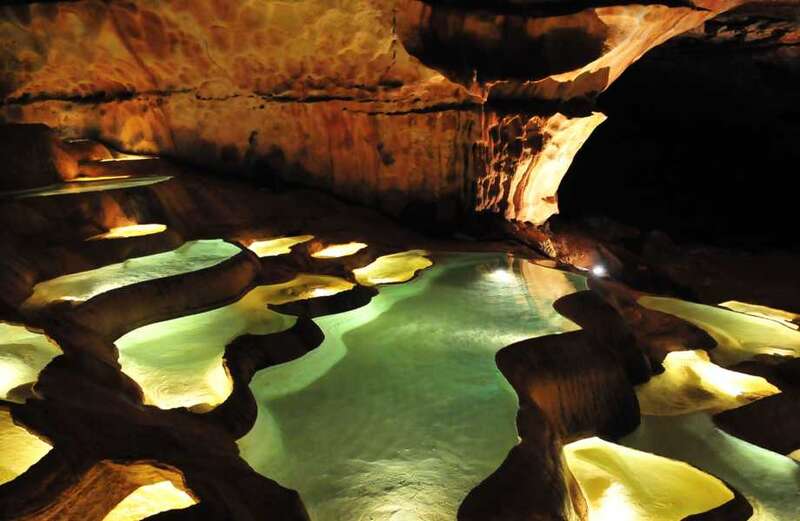HUMANS from 8,000 years ago left traces behind in a 40-mile-deep cave that proves they somehow were able to maneuver through its extreme complexity.
The Saint-Marcel Cave in Bidon, France, is one of the most intricate caves in the world but traveling deep inside is considered dangerous.



A group of scientists discovered cavern humans took on the challenge of exploring the cave thousands of years ago.
Plunging into the Saint-Marcel Cave is considered complicated today even with extensive gear, especially for lighting.
This is because the cave has deep pits and hazardous paths.
 I starred at the World Cup and almost beat France - now I'm homeless in London
I starred at the World Cup and almost beat France - now I'm homeless in London
The research was led by geomorphologist Jean-Jacques Delannoy of the French National Centre for Scientific Research
The study is titled: Investigating Human Activities in Caves Through the Study of Broken Stalagmite Structures: The Case of the Saint-Marcel Cave (France) During the Early Holocene.
It was published in the Journal of Archaeological Method and Theory on April 10.
CLUES OF ANCIENT HUMANS
The scientists came across broken stalagmites, which are pointy pieces that drop down from the ceiling, more than 0.93 miles from its opening.
This led to suspicions of when they were broken off considering not many humans make it far back in the cave.
There was specifically a group of cave pieces placed in a structure-like formation.
The scientists did date testing to pinpoint a time period for the pieces used in the structure and concluded it occurred 8,000 years ago.
"This discovery and the fact that the structures are around 8,000 years old is exceptional," Delannoy told PNAS.
"This raises the question of cave knowledge at that prehistoric period, their ability to explore and cross shafts, and their mastery of lighting."
Other pieces date back to 10,000 years ago at the latest.
 Tech giants have failed to stop harmful content because they put profits first
Tech giants have failed to stop harmful content because they put profits first
The most recent broken cave pieces date back 3,000 years ago.
MORE SOPHISTICATED THAN EXPECTED
The findings have encouraged scientists to do further research into the lives of humans who occupied the caves at the time.
It also sheds light on new possibilities of what people were capable of back then in what is considered complicated.
"The evidence for prehistoric human activity in the cave of Saint-Marcel is conclusive," the study said.
"Our study results are changing the way we look at the Saint-Marcel cave network, giving them a cultural dimension linked to prehistoric use.
“The results from Saint-Marcel cave invite us to take a new look at these societies, their use of caves, which has hitherto been considered to be limited to the entrance areas, their engagement with deep underground landscapes, and the associated symbolic dimensions."
“They bring to light the engagement of past human communities with the deep underground environment.
“Which can only be accessed by crossing obstacles (pits) that, today, are considered as difficult to be crossed.”



































